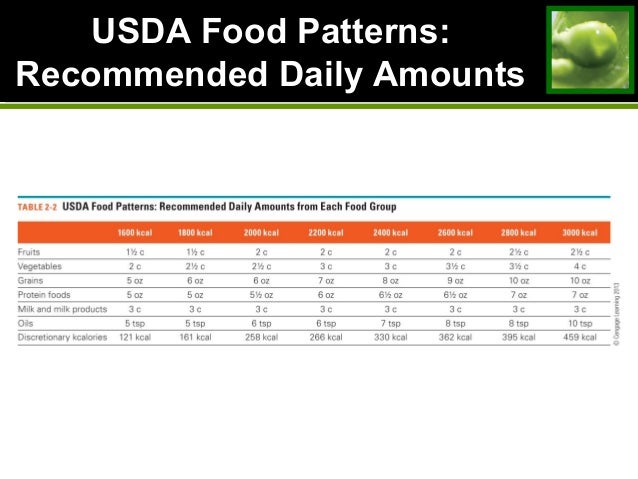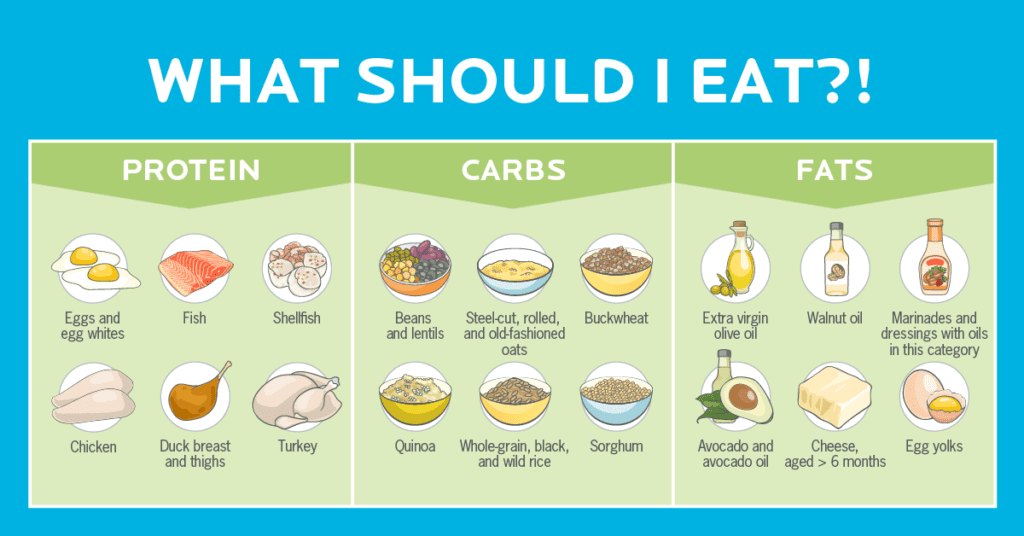43 nutritional labels on food are based on a diet of
The Effects of Nutrition Knowledge on Food Label Use: A Review of the ... Nutrition labels typically contain information on calories, serving size, and amounts and/or daily values of several macronutrients, vitamins, and minerals (e.g., fats, carbohydrate, calcium). In the US, the content of NFPs is government regulated and must include serving size, calories, nutrients, and percent of daily values of each nutrient. › food › new-nutrition-facts-labelHow to Understand and Use the Nutrition Facts Label | FDA Feb 25, 2022 · Overview. The information in the main or top section (see #1-4) of the sample nutrition label (below) can vary with each food and beverage product; it contains product-specific information ...
Changes to the Nutrition Facts Label | FDA The Nutrition Facts label on packaged foods was updated in 2016 to reflect updated scientific information, including information about the link between diet and chronic diseases, such as obesity...

Nutritional labels on food are based on a diet of
pets.webmd.com › dogs › feeding-puppyNutritional Needs of Puppies - WebMD The Importance of a Balanced Diet. Your puppy needs a balanced diet, which is found in many store-bought dog foods or can be prepared at home with the advice of your vet. A balanced diet gives your buddy energy, keeps their brain and body humming, and helps them grow. When you buy puppy food, look for these words on the label: How to Understand and Use the Nutrition Facts Label | FDA Feb 25, 2022 · Overview. The information in the main or top section (see #1-4) of the sample nutrition label (below) can vary with each food and beverage product; it … Nutrition Facts and Food Labels When you need food and nutrition information based on fact or need to know how a healthy diet improves health and fights disease—rely on qualified professionals in the field. ... You may have noticed that infant food labels look different from adult food labels. While infant food labels also use the Nutrition Facts format, the information ...
Nutritional labels on food are based on a diet of. nap.nationalacademies.org › resource › 1066837491 Dog P01 16 07/24/06 4:47 PM Page 1 YOUR DOG’S ... Scientific research has shown that an adult dog’s daily diet can contain up to 50% carbohydrates by weight, including 2.5–4.5% from fiber. A minimum of approximately 5.5% of the diet should come from fats and 10% from protein. Determining Grams of Essential Nutrients from Petfood Labels nutritionistpro.comNutritionist Pro™ | Diet Analysis, Food Label, Menu Creation ... Designed and managed by registered dietitians for your comprehensive nutrition analysis needs. From food labels to menus to recipe calculations, Nutritionist Pro™ makes all your food science needs a simple and streamlined process. Since 1982 over 1,000,000 have relied on the Nutritionist Pro™ family of products. Diet Food Delivery - Healthy, Weight Loss Meals | Result Plan Affordable diet food delivery in the UK. Lose weight from £8.21 per day with our delicious and weight loss meals. ... We personalise your plan, based on your nutritional assessment, so you can be sure that what you’re eating is tailored to your nutritional needs. If you’re still not sure how this would work for you, please get in touch and ... Nutritionist Pro™ | Diet Analysis, Food Label, Menu Creation … Designed and managed by registered dietitians for your comprehensive nutrition analysis needs. From food labels to menus to recipe calculations, Nutritionist Pro™ makes all your food science needs a simple and streamlined process. Since 1982 over 1,000,000 have relied on the Nutritionist Pro™ family of products.
How To Read Food and Beverage Labels - National Institute on Aging At the top of the Nutrition Facts label, you will find the total number of servings in the container and the food or beverage's serving size. The serving size on the label is based on the amount of food that people may typically eat at one time and is not a recommendation of how much to eat. Read more about serving and portion sizes. Understanding Food Nutrition Labels | American Heart Association Remember that the information shown in the label is based on a diet of 2,000 calories a day. You may need less or more than 2,000 calories depending upon your age, gender, activity level, and whether you're trying to lose, gain or maintain your weight. The New Nutrition Facts Label | FDA The U.S. Food and Drug Administration (FDA) has updated the Nutrition Facts label on packaged foods and drinks. FDA is requiring changes to the Nutrition Facts label based on updated scientific... Nutrition Facts Label Flashcards | Quizlet What things must be listed on the Nutrition Facts Label? Total fat, saturated fat, trans fat, cholesterol, sodium, total carbohydrate, dietary fiber, sugars, protein, vitamin A, vitamin C, calcium, and iron What is cholesterol? A waxy, fat-like substance mainly produced in the liver and is found in all cells
nutritiondata.self.comSELF Nutrition Data | Food Facts, Information & Calorie ... The Caloric Ratio Pyramid™ The Caloric Ratio Pyramid appears in every ND analysis, and also on ND's Total Consumption report. This symbol lets you see at a glance how the Calories in the food are distributed, and can help you determine if the food aligns with common macronutrient-based diet plans, such as low-carb (e.g Atkins™ or South Beach™), low-fat, high-protein, or Zone™. Understanding Food Labels | The Nutrition Source | Harvard T.H. Chan ... Under the Food Allergen Labeling and Consumer Protection Act of 2004, eight major food allergens—milk, fish, tree nuts, peanuts, shellfish, wheat, eggs, and soybeans—are required to be listed in a "contains" statement near the Ingredients list if present in a food. An example would be "contains wheat, milk, and soy." Nutrition Labeling - an overview | ScienceDirect Topics Whilst 'salt' is not officially identified in the Directive as a 'nutrient', sodium information on many labels is being supplemented by a 'salt equivalent' figure, based usually on the formula salt = sodium × 2.5. The current Directive requires the nutrition information to be given per 100 g/ml. How to Read Nutrition Labels and Eat Healthy - Scripps Health The new Nutrition Facts Label on food packages has made it easier for people to make healthy eating choices when shopping for groceries. ... While information on the nutrition label is based on a 2,000-calorie a day diet, your calorie needs may be higher or lower, depending on your age, sex and physical activity level. ...
Why nutrition labels on food products? - MedClique Nutritional value refers to ingredients of food and the impact of constituents on a body. It is related to carbohydrates, fats, proteins, minerals, additives, enzymes, vitamins, sugar intake, cholesterol, fat, and salt intake. In general food, the label gives nutritional values to consumers.
Learn How the Nutrition Facts Label Can Help You Improve Your Health The Nutrition Facts label on packaged foods is based on updated science and dietary recommendations for Americans. Using the label can help you choose foods for a healthy diet. The label is required on all packaged foods made in the United States and imported from other countries.

35 best images about Time to get it off and eat better on Pinterest | Weights, Gluten and Weight ...
Improving the design of nutrition labels to promote healthier food ... The NFP on packaged foods. The passage of the Nutrition Labeling and Education Act of 1990 required the provision of standardized nutrition information through the NFP on most packaged foods in the United States. 26 Although some nutrition information on the NFP can vary based on the food product, the standard label includes information about serving size, kilocalories (kcal; calories) and ...
SELF Nutrition Data | Food Facts, Information & Calorie Calculator Find nutrition facts, including food labels, calories, nutritional information and analysis that helps promote healthy eating by telling you about the foods you eat. in ... and can help you determine if the food aligns with common macronutrient-based diet plans, such as low-carb (e.g Atkins™ or South Beach™), low-fat, high-protein, or Zone
37491 Dog P01 16 07/24/06 4:47 PM Page 1 YOUR DOG’S … Scientific research has shown that an adult dog’s daily diet can contain up to 50% carbohydrates by weight, including 2.5–4.5% from fiber. A minimum of approximately 5.5% of the diet should come from fats and 10% from protein. Determining Grams of …
Calories, Nutrition Facts, and Food Labels - Quizizz answer choices Yes, they make you gain weight. No, you should eat as many calories as possible for energy. No, but you should be aware of them to maintain a healthy weight. Yes. Calories do not add any nutrients. Question 10 30 seconds Q. A food label on a bag of chips shows that it contains 100 calories per serving. The bag contain 2.5 servings.
Food Labels 101: Understanding the Nutrition Facts Label Nutrition labels are based on a daily 2,000 calorie diet. Depending on your age, gender and activity level, you may need to consume more or less than 2,000 calories per day, so keep this in mind when viewing each label. Now let's take a look at the parts of the nutrition facts label and break it all down. Anatomy of a Nutrition Facts Label





Post a Comment for "43 nutritional labels on food are based on a diet of"